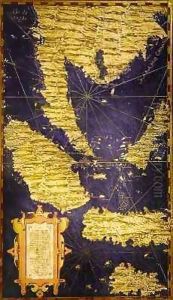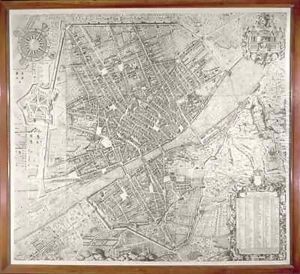Stefano Bonsignori Paintings
Stefano Bonsignori was an Italian painter and cartographer, born in 1530 in Florence, Italy, during the Renaissance, a period marked by significant achievements in the arts, science, and exploration. Bonsignori is best known for his work as a cartographer for the Medici family, one of the most influential and powerful families in Florence at the time. His maps were highly valued for their accuracy and detail, contributing significantly to the understanding of geography in the 16th century.
Bonsignori's career as a cartographer began under the patronage of Cosimo I de' Medici, Grand Duke of Tuscany, who recognized his talent and appointed him as the official cartographer of the Grand Duchy. In this role, Bonsignori created numerous maps and plans, including his most famous work, the 'Map of the Grand Duchy of Tuscany' (1584), which was praised for its meticulous detail and precision. This map was a significant achievement in the field of cartography and was used as a reference for many years.
Apart from his cartographic works, Bonsignori was also involved in artistic endeavors, although not much is documented about his paintings. His contributions to cartography overshadow his work as a painter, but it is believed that his artistic skills greatly contributed to the aesthetic appeal and accuracy of his maps.
Bonsignori's dedication to his craft and his innovative techniques in cartography earned him a respected place among the cartographers of his time. He was a pioneer in the use of scientific methods in map-making, which included careful measurements and observations, setting a new standard for accuracy in cartography.
Stefano Bonsignori passed away in 1589 in Florence, leaving behind a legacy that would influence the development of cartography in Europe. His works are still studied and admired today for their beauty and precision, and they provide a valuable insight into the geographical knowledge of the Renaissance period.












